10 Under 10: Pennsylvania dentist marries dentistry, public health in education career
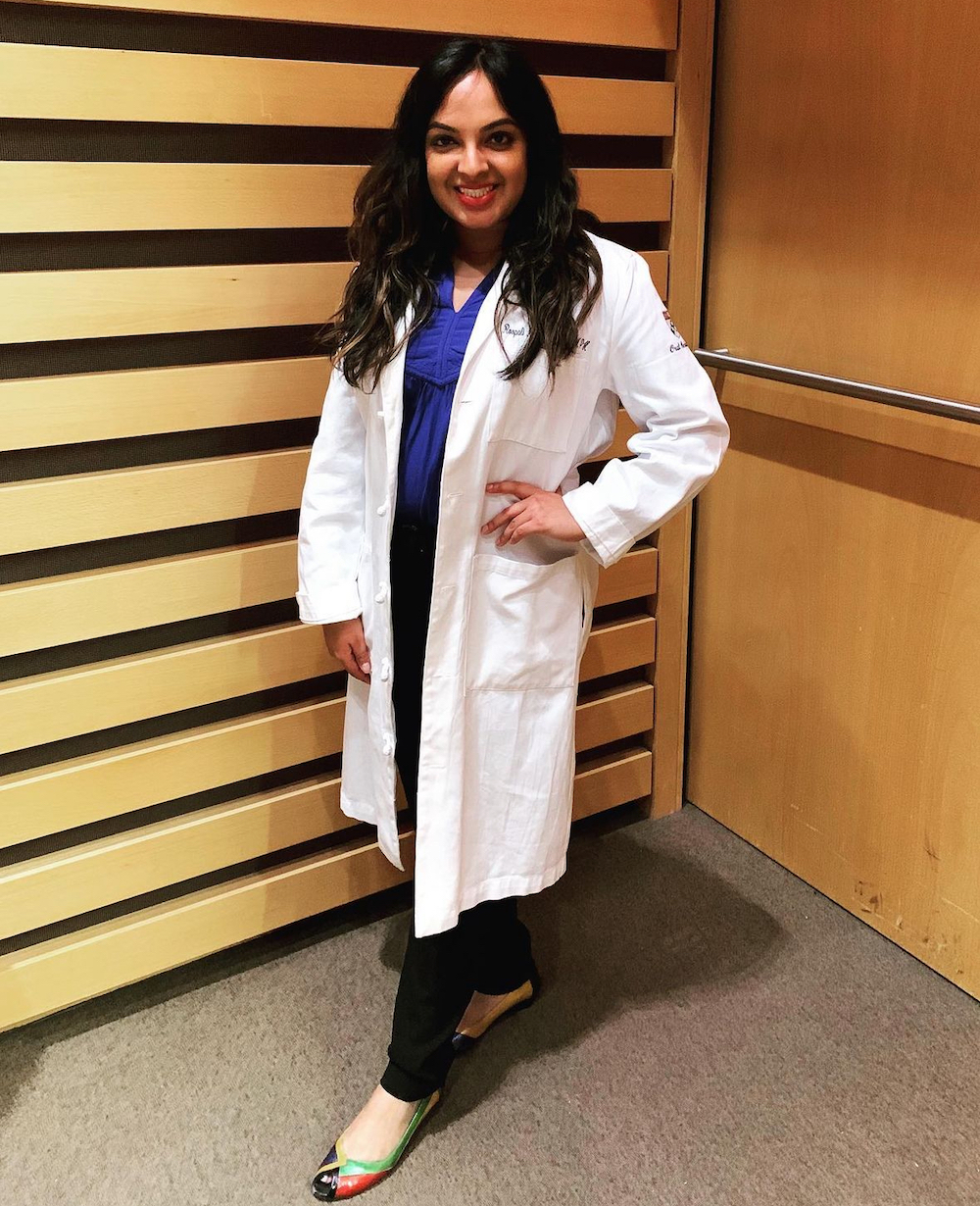
The importance of dental health and oral hygiene were instilled in Roopali Kulkarni, D.M.D., and her sisters from a very early age. Her mother and father, who is a cardiologist, both stressed the value of “sound health,” which included going to the dentist regularly and taking care of their teeth at home.
“They have both influenced my journey in health care and my way of approaching my lifestyle and my passion,” she said.
That’s how Dr. Kulkarni, a recipient of a 2024 ADA 10 Under 10 Award, looks back on the lessons she was taught early on. For example, she was given a calendar during elementary school to track when she was brushing her teeth.
“I remember my mom being very diligent, especially with me at home, saying, ‘Well, we have to fill out your calendar toothbrush,’ and they really emphasized in general the importance of nutrition and hygiene and how your mouth health is connected to your overall health,” she said.

However, Dr. Kulkarni’s professional interest in dentistry came from an unlikely place: a lengthy dental and orthodontic period of treatment that started at a young age.
“I would say I have a very ‘free spirit,’ and growing up, my teeth decided to embody this free spirit and came in in every direction,” she said. “I started my dental journey at the age of 7 having undergone surgery, multiple rounds of braces, meeting with specialists, etc. — for many years, didn’t even want to smile. I didn’t feel comfortable or safe in it or confident in it. But most importantly, after learning how to find my laugh and my smile again, I really learned the importance of oral health and how in many ways it’s undermined.”
That journey from ages 7 to 13 exposed her to many different professions within dentistry. She saw the collaboration among those professions to deliver care that can help patients achieve confidence and empowerment in their oral health.
“So that laid the foundation for my interest and passion, and at the tender age of 7, I said, ‘I’m going to be a dentist,’” Dr. Kulkarni said.
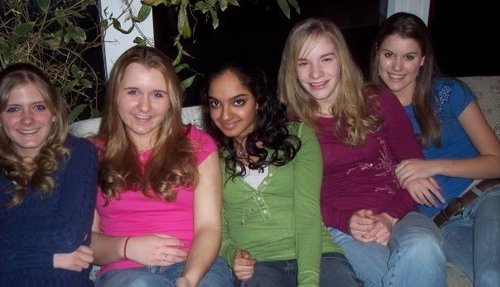
Before even beginning her formal dental studies, Dr. Kulkarni volunteered at a local hospital in high school to gain exposure to the health care field. At the hospital, she met an oral surgeon and was intrigued by that specialty.
When Dr. Kulkarni enrolled at Northwestern University for undergrad, that’s when her professional and personal interests really took off.
“At Northwestern, I felt like I was surrounded by so much innovation and drive,” she said. “I felt really motivated to work hard and achieve my dreams.”
That included beginning her formal pre-dentistry studies while majoring in psychology and minoring in classics. She also shadowed several dental professionals, from general dentist to periodontist to orthodontist. Those experiences allowed her to see the depth of variety within the profession and the importance of relationship building.
“There is such a unique relationship you can build with your patients, and that’s what I noticed during my shadowing experiences,” she said.
Outside of the classroom, Dr. Kulkarni was involved in one of the largest community service groups on campus, which also influenced her journey toward becoming a dentist.
“[Through community service work,] I realized dental care is something that wasn’t really accessible to a lot of people in the Chicagoland area, and ultimately I decided to take a year off between dental school and college,” she said.

Dr. Kulkarni used that time to take advantage of a few different experiences, each of which gave her additional clarity for her future as a dentist.
“One experience was working for a dentist in downtown Chicago,” she said. “It was like an internship program in the private practice, where she encouraged people who were interested in applying to dental school to be part of the practice. You could really see it from an inside perspective — how the practice runs, the billing, and the dental side and assisting.”
During the internship, a public health temporary research opportunity came up at Northwestern. Dr. Kulkarni’s friend approached her about backfilling for someone on that project, and she jumped in headfirst. Taking that chance influenced her decision to pursue a master’s degree in public health during dental school.
“My trajectory from college throughout even my gap year influenced how I viewed the profession, what really the role of the dentist is and what I wanted to pursue while I was in dental school,” she said.
As her gap year wrapped up, Dr. Kulkarni turned her full attention to dental school.
“Dentists play such a critical role in overall health. I wanted to be at a place where I could develop my skills in collaborative care and learn more about how I could contribute to the health of a population,” she said.
When looking at dental schools, she wanted to move back closer to home in the Northeast and find a program that would set her up for success no matter her career path in dentistry.
“I needed to be in a place where I felt supported for the rigors and challenges of the years ahead,” Dr. Kulkarni said.
That place was the University of Pennsylvania School of Dental Medicine.
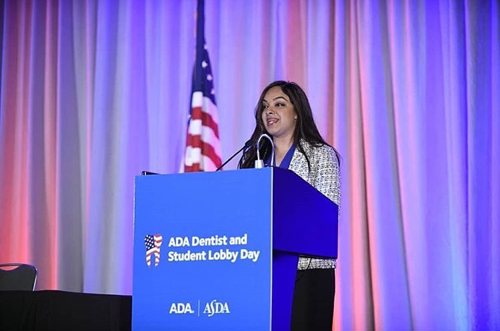
During her first year of dental school, Dr. Kulkarni met many of her mentors, who helped her develop a passion for public health and allowed her to participate in more public health research. The public health spark that started at Northwestern became even brighter at Penn and led Dr. Kulkarni to enroll in a Master of Public Health program at the end of her first year.
“The balance of both was very challenging,” she said. “I was part of two different curricula at the same time, and there was always this balancing act — one, trying to study for examinations and study for my lab exercises, and then in the evenings, I would run across campus and go to public health class.”
Dr. Kulkarni found being part of the public health program benefited her dental education.
“In dentistry, we work in the millimeter, but in public health, we work in the landscape. On days when I felt like I had tunnel vision and I was sitting and doing a lab project or studying for an exam, what actually helped me maintain my passion for dentistry was then being able to talk to a group of people about how oral health is really important and how it plays into the context of medicine or nursing or some other health care field,” she said. “I really developed a style of interdisciplinary care that I still carry with me in my professional life.”
As dental school and her master’s program were wrapping up, Dr. Kulkarni was introduced to a specialty at Penn known as oral medicine, which married many of her professional experiences and passions together.
“To me, public health is really an integrative field of all different health care professions. Oral health is a very interdisciplinary field; you work on a team and you manage in the long term a lot of chronic conditions,” she said. “So there are a lot of parallels between oral medicine and public health. One being the innovation. There is a lot of research that’s done and integration and cross talk between health care professions to better care for patients.”
Dr. Kulkarni enrolled in Penn’s two-year residency program in oral medicine, which offered multiple models and tracks students could follow to find their niche.
“The model that worked well for me within that specialty was a hospital-based practice and teaching, and that’s what led me to want to get into education full time,” she said.

During her two-year residency, Dr. Kulkarni worked in a combined hospital and school program, which allowed her to tap into her dental and master’s degrees at the same time.
“I had exposure to our hospital clinics and working with patients and doing rotations in different medical professions,” she said. “And even more, I was able to develop this expertise in dentistry that I could then share with all of these other health care professionals I was working with. I remember being on rotation with oncology and they actually asked for my input on a case of a patient who was having oral complaints, and it is really unique to know you’re in this space to collaborate but also bring your knowledge to the table.”
During her residency program, Dr. Kulkarni was also able to work with dental students in a teaching capacity, something that allowed her to indulge her love of theater and public speaking. And when her residency program wrapped up, she began applying for academic and hospital positions until an opportunity to stay and teach at Penn presented itself.
“I think a lot of the time when you’re a new dentist and you’re about to start a new job, you fall into this trap of imposter syndrome, especially when you’re going into education and you have to be the person who knows and person who can answer student questions,” Dr. Kulkarni said. “I became comfortable saying, ‘I don’t know.’”
She also reflected back on her mentors leading up to this point and picked which traits and approaches she wanted to mirror in her own teaching and mentorship positions.
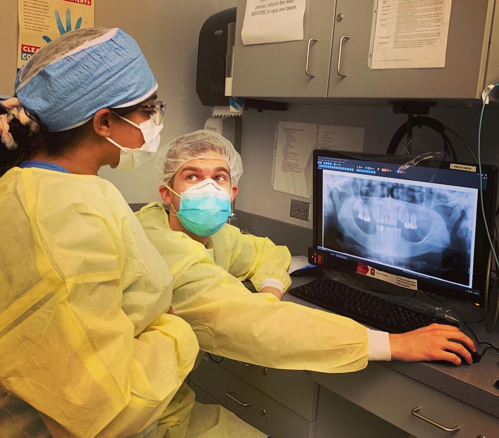
Now on her third year at Penn in an academic role, Dr. Kulkarni breaks down what a typical day looks like as a clinician educator.
“My work is mainly clinical and didactic teaching,” she said. “Four days a week, I see patients with students and residents. We rotate among a few clinics, primarily the oral medicine clinic. One day, I practice within the hospital system, seeing patients and covering in-patients as the attending. I’ll also go into the classroom to meet students and lecture.”
On top of this, Dr. Kulkarni is still active in public health research. She dedicates time to scholarly activities and currently works on several research projects and grants.
In addition to her busy clinical, teaching and research schedules, Dr. Kulkarni is active with two organizations, one being the Pennsylvania Dental Association. After graduating dental school, Dr. Kulkarni began working on the organization’s new dentist committee. Today, she serves on the Pennsylvania Dental Association’s membership committee, board of trustees and several subgroups and taskforces. She was inspired to join the statewide organization because of her work with the American Student Dental Association. During dental school, she was the ASDA national president.
At the university, she is also a faculty adviser for an organization she co-founded in dental school: the Penn Dental Happiness Project. Open to all students, it started as a club that wanted to promote positive work environments and help students and faculty build relationships. Dr. Kulkarni said the group has now grown into hosting unique and innovative events to help students relieve stress.
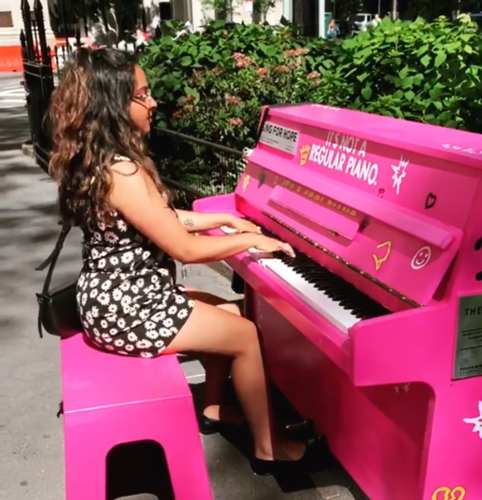
In her free time, Dr. Kulkarni loves to travel, play piano, sing and dance. Weekly, she attends a musical theater dance class and is also active outdoors as a runner. She said her experiences outside of the office make her a stronger clinician and educator and teach her things about herself that help make her a better communicator and teacher to the next generation of dentists.
When asked what is the biggest lesson she’s learned so far in her career, Dr. Kulkarni answered quickly.
“You can’t take care of others if you don’t take care of yourself,” she said. “We have so much compassion for others and our patients, and we need to give that back to ourselves.”
Dr. Kulkarni said being recognized as an ADA 10 Under 10 winner is “a dream come true.”
“It’s so inspiring to be a part of a group of individuals being recognized at such an early stage of our careers. For me, it provides me even more momentum,” she said. “I want to continue to be a better dentist, educator, leader, advocate in my professional life and really in the field of dentistry as a whole, and I’m so grateful for the opportunity to share my story as it relates to this award."
Learn more about the 10 Under 10 Awards program at ADA.org/10Under10 and get inspired at SmileCon's Changemakers Celebration, which will recognize this year’s 10 Under 10 Award winners and other award recipients.



